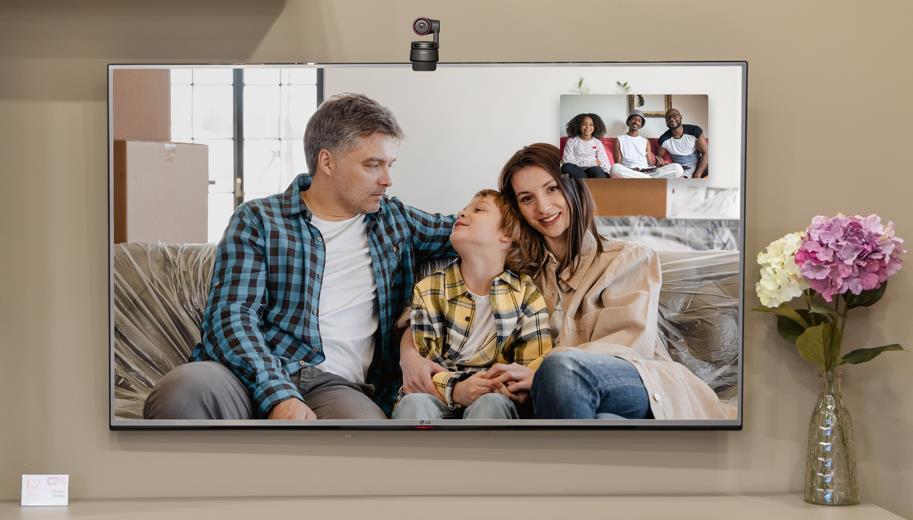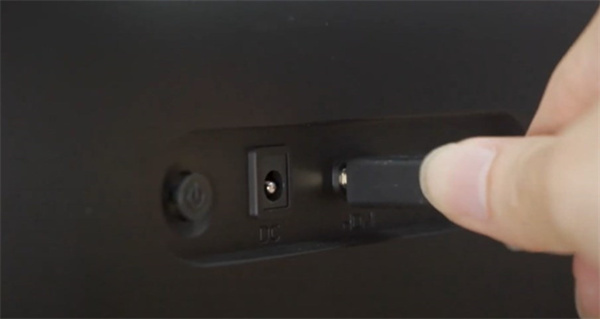How to Easily Connect a Webcam to a Smart TV for Video Calls?

That incredible feeling when you see your grandkids' faces fill your entire TV screen during a video call - it's a game changer. Or when your weekly team meeting transforms from tiny laptop squares to a larger-than-life presentation that actually keeps everyone engaged. With over 40% of Americans now working remotely at least part-time, the humble webcam has become our window to the world.
Connecting your webcam to your TV isn't just about making video calls - it's about creating immersive experiences that make distance feel irrelevant. As someone who's helped hundreds of people set up their home video systems, I can tell you that the process is much simpler than most people expect. In this guide, I'll walk you through exactly how to connect any webcam to your smart TV, whether you're using it for family calls, fitness classes, or professional presentations.
What You'll Need: Compatibility Check First
Before we dive into the connection process, let's make sure you have everything needed for a smooth setup. The most common reason webcam-to-TV connections fail is compatibility issues, not technical complexity.
Essential Equipment Checklist
- Webcam with USB or HDMI output - Most modern webcams use USB, while some professional models offer HDMI
- Smart TV with available USB/HDMI ports - Most TVs made after 2015 should work
- Proper cables and adapters - Depending on your webcam and TV ports
- Stable internet connection - Wired Ethernet preferred for video calls
- Video calling app - Zoom, Skype, Google Meet, or your preferred platform
TV Compatibility Quick Check
Not all smart TVs support webcams equally. Here's how to verify your TV will work:
| TV Type | Webcam Support | Connection Method | Notes |
|---|---|---|---|
| Modern Smart TVs (2020+) | Excellent | Direct USB or HDMI | Most plug-and-play compatible |
| Basic Smart TVs (2015-2019) | Good | USB with possible adapter | May need specific app support |
| Non-Smart TVs with HDMI | Limited | HDMI with external device | Requires streaming stick or box |
| Older TVs | Poor | Not recommended | Limited compatibility and features |
Connection Methods Compared
Depending on your TV and webcam, you'll use one of these connection approaches:
| Method | Best For | Setup Difficulty | Video Quality |
|---|---|---|---|
| Direct USB Connection | Modern smart TVs with USB ports | Easiest (Plug-and-play) | Up to 4K depending on webcam |
| HDMI Connection | All TVs with HDMI ports | Moderate (May need adapter) | Excellent (Up to 4K) |
| Streaming Device | Older or non-smart TVs | Moderate | Good (Depends on device) |
| Wireless Connection | Advanced users | Most Complex | Variable (Network dependent) |
Essential Adapters for Different Setups
If your webcam and TV have different ports, you'll need the right adapter. The OBSBOT UVC to HDMI Adapter is my top recommendation because it maintains 4K quality with virtually no latency.
Why This Adapter Stands Out:
- 4K UVC to HDMI Conversion: Maintains exceptional video quality throughout the conversion process
- True Plug-and-Play: No drivers or software installation required
- Near-Zero Latency: Perfect for real-time video conversations
- Universal Compatibility: Works with most USB-C UVC webcams, not just OBSBOT models
- Firmware Upgradable: Future-proof with updateable firmware
Step-by-Step: How to Connect Webcam to TV
Now for the practical part. Follow these steps based on your specific setup, and you'll be making TV video calls in under 10 minutes.
Method 1: Direct USB Connection (Easiest)
If your TV has USB ports and your webcam uses USB, this is your simplest option:
- Locate USB port on your TV (usually on the back or side panel)
- Connect your webcam directly using its USB cable
- Power on your TV and switch to the correct input source
- Open your video calling app (Zoom, Skype, etc.)
- Select your webcam in the app's video settings if not detected automatically

Method 2: HDMI Connection (Most Reliable)
For the most consistent results, especially with 4K webcams, HDMI is your best bet:
- Connect your webcam to an HDMI adapter if it doesn't have native HDMI output
- Plug the HDMI cable into an available HDMI port on your TV
- Power on all devices (webcam, adapter if used, and TV)
- Switch TV input to the correct HDMI source using your remote
- Launch your video app and configure camera settings
Method 3: Using Streaming Devices
If your TV isn't smart or lacks camera support, use a streaming device:
- Amazon Fire TV: Limited webcam support via USB or wireless apps
- Google Chromecast: Screen mirroring from another device with webcam
- Apple TV: Continuity Camera feature with compatible iPhones
- Standalone Android TV Box: Best overall webcam support
Connection Troubleshooting Quick Guide
| Problem | Likely Cause | Solution |
|---|---|---|
| TV doesn't detect webcam | Insufficient power or incompatible format | Try different USB port, use powered hub, or check TV compatibility list |
| Video quality is poor | Bandwidth limitations or wrong resolution | Use HDMI connection, reduce other network usage, check camera settings |
| Audio not working | TV using wrong audio source | Change TV audio input to webcam or use external speakers |
| Video lag or stuttering | Insufficient processing power | Close other apps, reduce video resolution, or use wired connection |
Pro Tips for Flawless TV Video Calls
After helping countless clients set up their TV video calling systems, I've compiled these essential tips that separate mediocre experiences from exceptional ones.
Optimize Your Physical Setup
- Camera positioning matters: Place your webcam at eye level for natural sight lines
- Mind the distance: Sit 4-8 feet from your TV for the best framing
- Lighting is crucial: Face toward natural light or add soft artificial lighting
- Reduce background noise: Use carpets, curtains, and webcam with noise cancellation
- Check your angles: Ensure the camera captures your upper body, not just your face
Technical Optimizations
- Wired internet connection: Use Ethernet instead of Wi-Fi for stable video
- Close background apps: Reduce TV processor load for smoother performance
- Update everything: Keep your TV firmware and video apps current
- Audio considerations: Consider external speakers or microphone for larger rooms
- Test before important calls: Always do a quick test call to verify everything works
Advanced Setup: Multi-Person TV Video Calls
For family calls or team meetings where multiple people will be on camera:
- Choose a wide-angle webcam or position camera further back
- Use a webcam with group mode that can automatically frame multiple people
- Consider an external microphone for better audio pickup across the room
- Arrange seating in a slight arc rather than a straight line for better visibility
Best Webcams for TV Connection
Not all webcams work equally well with TVs. Based on extensive testing, here are my top recommendations across different budgets and use cases.
Premium Choice: OBSBOT Tiny 2 4K Webcam
For those who want the absolute best TV video calling experience, the OBSBOT Tiny 2 stands in a class of its own, especially for larger screens where detail matters most.
Why It's Perfect for TV Use:
- Stunning 4K HDR Video: Crystal clear image quality that looks incredible on large TV screens
- AI Auto Tracking: Automatically follows your movements - perfect for when you're moving around during presentations
- Gesture & Voice Control: Change camera modes or zoom without touching the camera
- Excellent Low-Light Performance: Maintains image quality even in typical living room lighting
- Wide Compatibility: Works seamlessly with all major video platforms and most smart TVs
Webcam Comparison Table
| Webcam Model | Best For | Max Resolution | TV Compatibility | Price Range |
|---|---|---|---|---|
| OBSBOT Tiny 2 | Premium video calls, presentations | 4K @ 30fps | Excellent | $299 |
| Logitech Brio 4K | Business meetings, recording | 4K @ 30fps | Very Good | $199 |
| Razer Kiyo Pro | Streaming, variable lighting | 1080p @ 60fps | Good | $149 |
| Microsoft LifeCam | Budget option, basic calls | 1080p @ 30fps | Fair | $69 |
Mounting Your Webcam on a TV
Proper mounting ensures stable video and optimal angles:
- Use the included mount: Most webcams come with adjustable mounts designed for TVs and monitors
- Magnetic mounts: Some premium webcams like the OBSBOT Tiny 2 feature convenient magnetic mounting
- Third-party options: For unusual setups, consider flexible arm mounts or tripod adapters
- Positioning tip: Center the camera at the top of your TV for the most natural viewing angle
Webcam to TV FAQs & Troubleshooting
Here are answers to the most common questions I receive about connecting webcams to TVs, based on real-world experience.
1. Can any webcam connect to any smart TV?
Not exactly. While most modern webcams work with most smart TVs, compatibility depends on the TV's operating system and USB controller. Samsung Tizen and LG webOS TVs generally have the best webcam support. Always check your TV manufacturer's compatibility list before purchasing a webcam.
2. Why isn't my TV recognizing my webcam?
This is usually caused by one of three issues: insufficient power (try a powered USB hub), incompatible video format (check TV specs), or missing codec support (update TV firmware). The USB port on your TV might not provide enough power for some high-end webcams.
3. Can I use a wireless webcam with my TV?
Yes, but with limitations. Wireless webcams typically connect via Wi-Fi and require specific apps on your TV. The experience is often less reliable than wired connections, with potential latency and quality issues. For important video calls, I always recommend wired connections.
4. What's the difference between connecting via USB vs HDMI?
USB connections are more common but may have compatibility issues. HDMI connections typically provide better video quality and more reliable detection but often require adapters for webcams that don't have native HDMI output.
5. Do I need special software to use a webcam with my TV?
Usually not. Most modern smart TVs automatically detect compatible webcams when connected. However, you will need video calling apps like Zoom, Skype, or Google Meet installed on your TV to actually make calls.
6. Can I use my TV webcam for recording, not just calls?
Absolutely! Once connected, your webcam can be used for recording videos, creating content, or even security monitoring through appropriate apps available on your TV's app store.
7. Why is the audio quality poor on my TV video calls?
This is common because TV speakers and built-in webcam microphones aren't optimized for voice pickup at a distance. Consider using an external USB microphone or a webcam with advanced noise-cancellation features like the OBSBOT Tiny 2 for better audio quality.
Transform Your TV into a Communication Hub
Connecting a webcam to your TV might seem like a small technical project, but the impact is genuinely transformative. Suddenly, video calls become immersive experiences that actually feel like you're in the same room with people, whether they're across town or across the world.
The setup process is straightforward once you understand the compatibility requirements and connection options. Whether you choose the plug-and-play simplicity of a direct USB connection or the reliability of an HDMI setup, you'll be amazed at how this simple upgrade enhances your communication.
If you're ready to take your TV video calls to the next level, I highly recommend the OBSBOT Tiny 2 4K Webcam for its exceptional image quality, intelligent tracking features, and reliable performance. It's an investment that will pay dividends in clearer, more engaging conversations for years to come.
Remember, in our increasingly connected world, the quality of our connections matters. Don't settle for tiny laptop screens when your entire TV can become a window to the people who matter most.

















